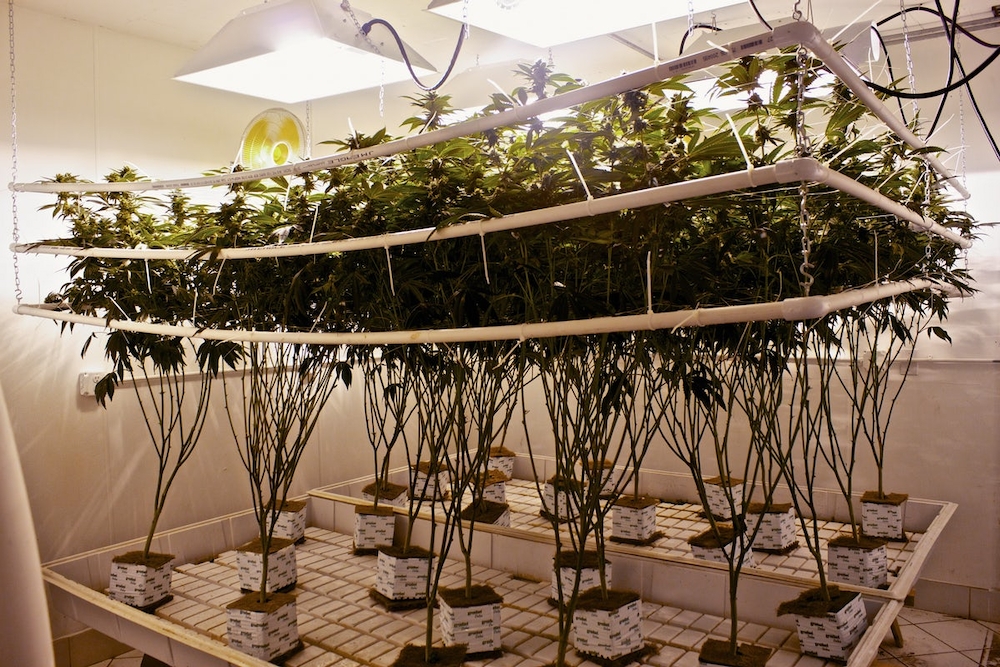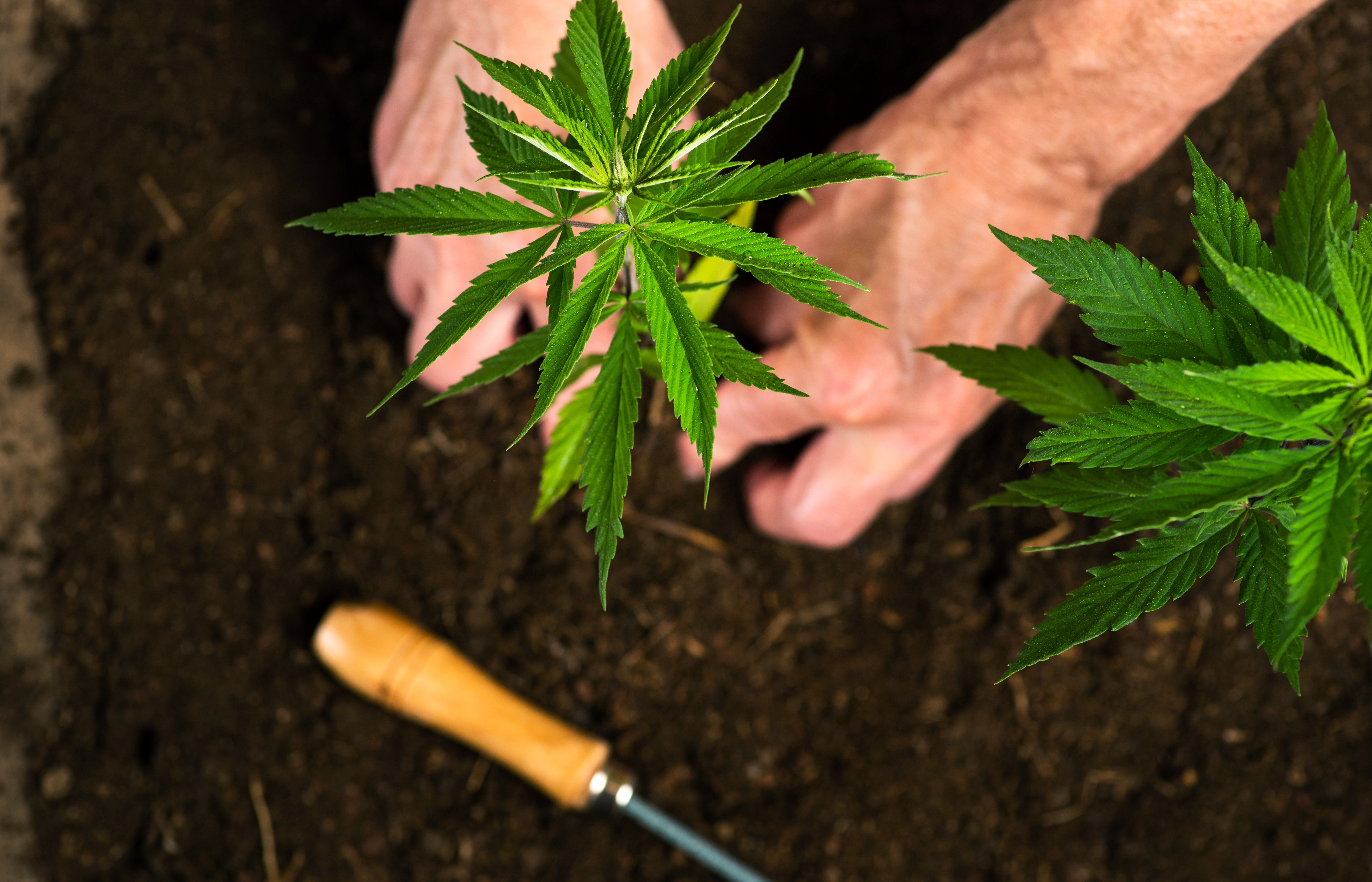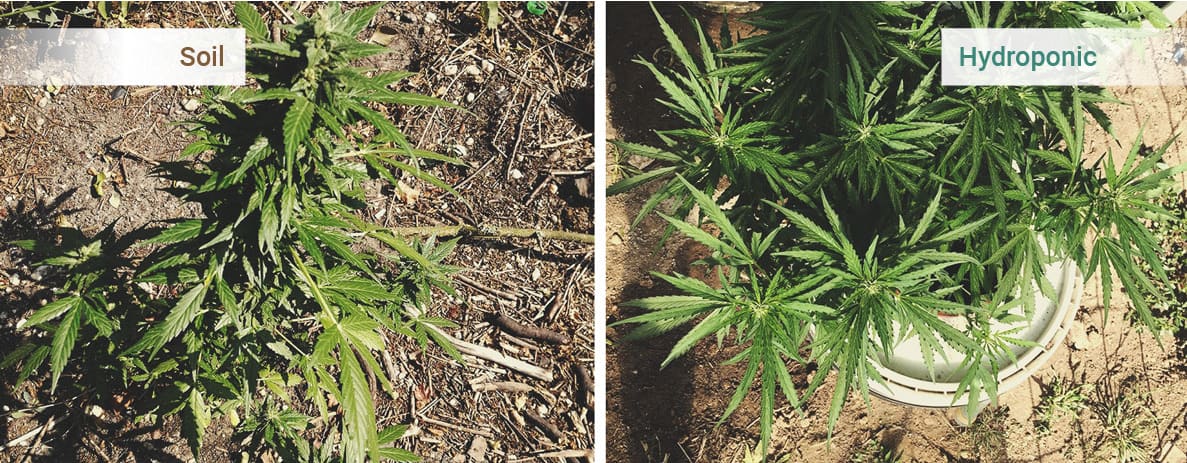Soil and hydroponic cannabis growing are two of the most common methods of cultivating marijuana plants. Both techniques involve setting up an environment that is conducive to plant growth, but there are several differences between these two approaches.
What is Hydroponic Cannabis Cultivation?
Hydroponic cannabis cultivation is a method of growing marijuana plants without soil. Instead, a nutrient-rich solution is used to provide the necessary nutrients for plant growth. Hydroponics requires more specialized equipment than soil cultivation and it needs to be monitored closely to prevent nutrient deficiencies or overdoses that can damage the plants.
Despite this extra attention, hydroponics provides a more consistent source of nutrition than soil cultivation since the nutrients are constantly available in the water solution. This type of growing can be expensive and difficult for beginners, but it's popular among experienced growers who want to take their cannabis cultivation to the next level.
Read More: Why Is Cannabis So Colorful?
Benefits of Hydroponic Systems
Hydroponic systems offer many benefits for cannabis cultivation. By using a nutrient-rich solution instead of soil, plants can get the exact nutrients they need to grow quickly and efficiently. This means that plants are less likely to suffer from deficiencies or overdoses of specific nutrients, which can lead to stunted growth or even death.
Additionally, hydroponics is more efficient than soil cultivation because the water is constantly circulated, ensuring that the nutrients are always available to the plant roots. This also reduces the risk of contamination caused by bacteria and fungi found in soil.
What is Soil Cannabis Cultivation?
Soil cannabis cultivation is the traditional method of growing cannabis. It involves planting the seeds in nutrient-rich soil and providing them with light, water, and air. Soil provides essential nutrients for plant growth, including nitrogen, phosphorus, potassium, and other trace elements.
Cannabis growers may add additional fertilizer to supplement the natural nutrients found in soil. The advantage of soil cultivation is that it requires less specialized equipment than hydroponics, making it more accessible for soil growers. Additionally, since plants are rooted directly in their native environment they tend to be hardier and more resilient to environmental changes and pests.
Benefits of Soil Systems
Soil systems can provide many benefits to cannabis growers. For starters, soil is a natural environment for plants to grow in, providing them with the necessary nutrients and minerals they need to thrive.
Additionally, soil systems are less expensive than hydroponic systems, making them more accessible to novice growers. Furthermore, since plants are rooted directly in their native environment they tend to be hardier and more resilient to environmental changes and pests.
Finally, soil systems don’t require specialized equipment like hydroponics do, so they can be easier to set up and maintain. With proper care and attention, soil systems can help you grow cannabis plants that produce high-quality buds.
Growing Cannabis With Hydroponic System
Hydroponics is an increasingly popular method of growing cannabis that is becoming more and more popular among hydroponic growers. Hydroponic systems use nutrient-rich water to grow plants instead of soil, allowing for faster growth, higher yields, and a greater level of control over the environment in which the plants are grown. Hydroponic systems can be built at home or purchased pre-made from a variety of sources.
The main advantages of hydroponic cultivation are increased speed of growth, greater yields, and precise control over the growth environment. With hydroponic growing, you can provide your plants with exact levels of nutrients without having to worry about the composition of soil or other environmental factors like temperature and humidity.
However, hydroponic cultivation also has some drawbacks compared to traditional soil-based growing methods. One important consideration is that hydroponics require a much higher initial investment in terms of equipment compared to soil cultivation methods - such as pumps, reservoirs, lights, and other components necessary for proper operation - which can make it cost-prohibitive for many hobbyists or smaller-scale operations.
Nutrient Solutions for Marijuana Plants in a Hydroponic System
Nutrient solutions are a key component of any hydroponic method, and cannabis plants require specific nutrients to ensure optimal growth. A well-rounded nutrient solution should provide essential macronutrients like nitrogen, phosphorus, and potassium as well as secondary nutrients like calcium and magnesium. Additionally, micronutrients such as boron, copper, iron, manganese, molybdenum, and zinc are also important for proper plant development.
The exact amounts of each nutrient needed will vary depending on the strain of cannabis being grown as well as the particular environment in which it is being cultivated. It is important to research the specific strain you are growing to determine its exact nutrient requirements.
Additionally, pH levels must be closely monitored and adjusted accordingly to ensure optimal absorption of the various nutrients that your plants need - otherwise, they may be unable to access them at all!
Different Types of Inert Mediums Used in Hydroponics For Cannabis Growing
When growing cannabis in a hydroponic system, inert mediums are an important component that can help support healthy roots. Inert mediums are materials that do not contain any nutrients or actively participate in the growth of the marijuana plants.
Instead, they provide structure for the root system and keep the plant upright. Common types of inert mediums used in hydroponics for cannabis cultivation include expanded clay balls, Rockwool, coconut fiber, and perlite.
Growing Cannabis in a Soil System
Growing cannabis in a soil system is an increasingly popular option for many home growers. This type of cultivation offers a natural and more traditional approach to growing the plant, while also offering numerous benefits.
Soil-based systems require less maintenance than hydroponic systems, as they rely on naturally occurring bacteria and fungi in the soil to break down organic matter into usable nutrients for the plants. These systems also provide better control over nutrient levels and pH, allowing you to tailor your nutrient solution to meet the specific needs of your cannabis plants.
Nutrients Needed for Growing Cannabis in Soil
Cannabis plants grown in soil have specific nutrient requirements that must be met to achieve maximum yields. The ideal pH range for marijuana in the soil is between 6.0 and 7.5, as this will ensure your plants have access to all the necessary nutrients.
During the vegetative stage of cannabis, nitrogen (N), phosphorus (P), potassium (K), and magnesium (Mg) are essential for healthy growth and development. Calcium, sulfur, iron, boron, copper, zinc, manganese, and molybdenum are also needed but in much smaller amounts than the macronutrients mentioned above.
Pros and Cons of Growing Cannabis in Soil
Growing weed in soil has its pros and cons. On the pro side, it is the most natural way to cultivate cannabis and allows for a more diverse range of nutrients than hydroponics. Soil also holds water better than hydroponic systems, making it easier to maintain a consistent level of moisture for your plants. Additionally, soil-grown cannabis tends to have a richer flavor and aroma due to the interaction with beneficial microbes found naturally in soil.
On the con side, soil-grown cannabis can be prone to problems such as pests and diseases that can be difficult to manage without using chemical pesticides, which can contaminate your crop. Additionally, managing nutrient deficiencies or toxicities can be challenging when relying solely on organic matter in the soil as opposed to having complete control over nutrient levels with hydroponics.
Advantages of Each Method During the Seedling Stage
Both have advantages during the seedling stage, but the choice of which system to use depends on the experience level of the grower and their desired end product.
For novice growers, soil is a great choice since it is relatively low-maintenance and forgiving. The natural nutrients in the soil provide plenty of sustenance for young plants, allowing them to develop quickly and thrive. With soil cultivation, there is also no need to purchase expensive hydroponic equipment or supplies.
Hydroponic systems are more complex and require more work than soil systems, but they offer greater control over nutrient levels and pH balance in the medium. This can be beneficial for experienced growers who want to dial in specific conditions for their plants and achieve optimal harvests with every crop. Hydroponics also eliminates the need for weeding since there are no weeds present in a soilless medium like coco coir or rock wool cubes.
Advantages of Each Method During the Vegetative Stage
The vegetative stage is an important part of cannabis cultivation, as it sets the foundation for a successful crop in the flowering stage. During this period, both soil and hydroponic systems have benefits that can be utilized to maximize the potential of your crop.
Soil-grown cannabis allows for more natural growth due to its ability to hold water better and provide more consistent moisture levels. This helps stimulate root development and nutrient absorption, leading to healthier plants with higher yields and better flavor and aroma.
Hydroponics also has its advantages during the vegetative stage. With complete control over nutrient levels, growers have greater flexibility when it comes to providing specific nutrients at optimal concentrations for optimal health and growth of their plants. Additionally, hydroponics makes pH monitoring easier by allowing growers to adjust nutrient solutions quickly if necessary.
Overall, both soil and hydroponic systems offer unique advantages during the vegetative stage that can help increase yields and improve the quality of cannabis crops. By taking advantage of each method’s strengths, growers can optimize their growth conditions for maximum success!
Advantages of Each Method During the Flowering Stage
The flowering stage is an important part of cannabis cultivation, as it determines the quality and yield of the crop. When it comes to soil and hydroponic systems, each method has its advantages during this stage.
For soil-grown cannabis, the benefit lies in the ability to more easily maintain a consistent moisture level since soil holds water better than hydroponic systems. This allows for healthier root structure and development, leading to better nutrient absorption by the plant which can result in larger yields with better flavor and aroma.
Hydroponics also has its advantages during the flowering stage. With complete control over nutrient levels, growers have greater flexibility when it comes to providing specific nutrients at optimal concentrations for optimal health and growth of their plants.
Additionally, hydroponics eliminates the need for monitoring pH levels frequently, allowing growers to focus their attention on other aspects of cultivation such as controlling light cycles or temperature.
Read More: Stinging Nettles on Cannabis Plants
Comparison Between Soil and Hydroponic Cannabis Cultivation
When it comes to growing cannabis, two of the most popular methods are soil and hydroponic. The two systems have distinct differences that can influence the end product and the experience level of the grower.
Germination, Transplanting, and Harvesting
Germination is the first step in cannabis cultivation, no matter which method you choose. While soil and hydro growers can start the weed seeds in the same way, different techniques are used for each method. Soil growers have the option of sowing seeds directly into their final containers or garden plots, or sowing into soil plugs before transplanting later on. On the other hand, many hydro growers choose to sow into Rockwool cubes that slot into net pots, which are then inserted into hydroponic systems.
Transplanting is done when a cannabis plant has reached a certain size and is ready to be moved to its permanent home; either in soil or a hydroponic medium. Soil plants should be carefully removed from their plug, while hydroponic plants require the removal of the net pot holding their cube of medium. Both should then be planted at a depth that allows adequate root growth and stability.
Harvesting comes after months of growth and flower development when buds can finally be cut from plants and cured for consumption. In hydroponics, growers need to be extra careful during harvest so as not to disturb cannabis roots growing freely around media pieces in their reservoir tank. Careful handling is also important with soil-grown buds as they are more prone to damage due to being closer to the surface than those grown hydroponically.
Read More: Slugs and Snails on Cannabis Plants
Tips & Tricks for Each Method
No matter which method of cannabis cultivation you choose, there are some key tips and tricks to keep in mind. For soil cultivation, the most important thing is to make sure the soil is well-aerated and provides adequate drainage. Additionally, it’s important to use a quality soil mix that is rich in organic matter and contains enough key nutrients for your plants.
When using hydroponics, make sure to regularly check the pH levels in your nutrient solution and adjust accordingly. Additionally, be sure to provide sufficient oxygenation to your root system and provide proper aeration to ensure the health of your plants.
Lastly, no matter what method you choose, be sure to monitor temperature levels throughout the entire growth cycle as extreme temperatures can hurt growth and yield. By following these tips and tricks for each method of cannabis cultivation you will be able to maximize your weed harvest!
Which to Choose: Soil or Hydroponic Cannabis Cultivation?
Both methods require careful management to achieve the best results, with hydroponics requiring more attention when it comes to pH levels, oxygenation, and nutrient dosage. When considering which method is best for you, consider your resources available and how much time you can dedicate to caring for your plants. With proper research and care, either method has the potential for a successful harvest!


 Français
Français 




